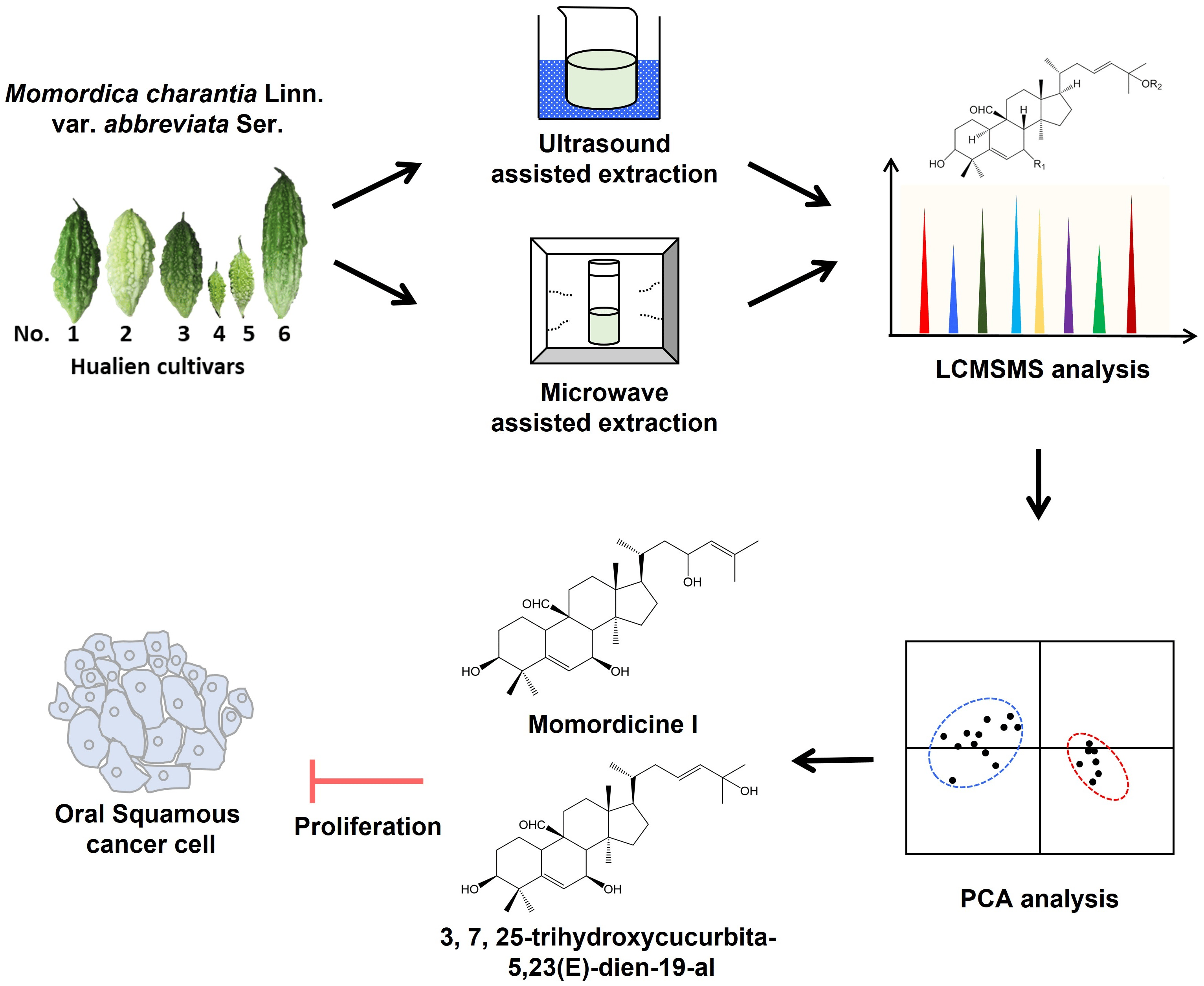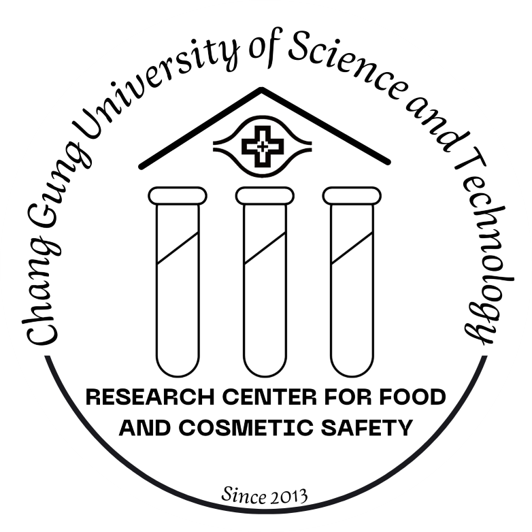Microwave- and Ultrasound-Assisted Extraction of Cucurbitane-Type Triterpenoids from Momordica charantia L. Cultivars and Their Antiproliferative Effect on SAS Human Oral Cancer Cells

圖文摘要說明
山苦瓜中富含的「葫蘆烷型三萜類」是其主要的生物活性來源。本研究旨在比較不同萃取技術與山苦瓜栽培品種,以找出獲取這類化合物的最佳條件。研究團隊針對六個不同品種的山苦瓜,分別採用「微波輔助」與「超音波輔助」萃取後,利用超高效液相層析串聯質譜儀(UHPLC-MS/MS)分析了十種指標性三萜類化合物的含量。結果顯示,微波輔助萃取法應用於第4號與第5號品種時,能產生最高產量。此外,主成分分析(PCA)的數據也明確指出,第4號品種因其「Momordicine I」與「3β,7β,25-trihydroxycucurbita-5,23(E)-dien-19-al」的含量特別豐富而顯著異於其他品種。最終的細胞實驗更證實,這兩種關鍵化合物能有效抑制SAS人類口腔癌細胞的增殖,顯示其具備作為抗癌活性劑的開發潛力。
Abstract
Cucurbitane-type triterpenoids are a major class of bioactive compounds present in bitter melon. In the present study, six different cultivars of bitter melon were extracted by using microwave- or ultrasound-assisted techniques to identify the prominent method that can extract the majority of cucurbitane-type triterpenoids. A UHPLC-MS/MS (ultra-high-performance liquid chromatography tandem mass spectrometry) system was used for the identification and quantification of ten cucurbitane-type triterpenoids. The results suggest that the use of microwave-assisted extraction on cultivars 4 and 5 produced higher amounts of the selected cucurbitane-type triterpenoids. The interpretation of principal component analysis also identified that cultivar 4 is significantly different from the others in which the compounds 3β,7β,25-trihydroxycucurbita-5,23(E)-dien-19-al and momordicine I were found in higher quantities. Upon further evaluation, it was also identified that these two triterpenoids can act as antiproliferative agents due to their effects on SAS human oral cancer cell lines.
Keywords:Momordica charantia L.; microwave-assisted extraction; 3β,7β,25-trihydroxycucurbita-5,23(E)-dien-19-al; momordicine I; UHPLC–MS/MS; SAS cell lines

